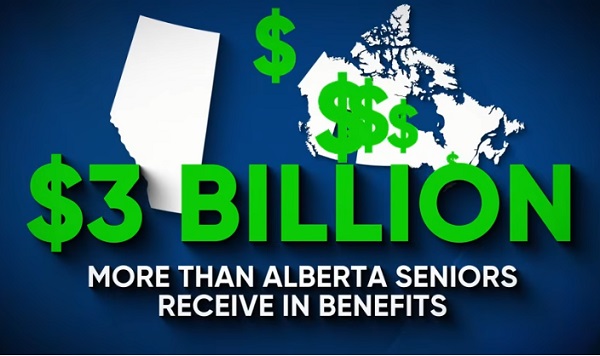Business
ParcelPal – Innovative Delivery Solution for Local Businesses

It is difficult to ignore the continuing trend of faster delivery options from retail giants like Amazon and Walmart. You could continue to contribute a portion of your income to these large organizations, but when you consider the importance of community, and how we can actively support that ideology – shopping from local merchants that support local communities is the key to progress.
– What happened to all of the mom and pop shops? –
A statement that has been an ongoing issue in our communities. The missing piece of the puzzle is the availability of a faster delivery option for local businesses. So that they can compete with the rising expectations of consumers and give businesses an intuitive platform to thrive. A US study conducted in 2019, The Onfleet 2019 Consumer Survey, reported that 3 out of 4 consumers would order from local merchants if they could offer same-day delivery.

Source: The Onfleet 2019 Consumer Survey
One company that found that missing piece is ParcelPal, a tech company based out of Vancouver that is avidly disrupting the delivery market. At the helm is Rich Wheeless, CEO of ParcelPal. Scaling and selling multiple private and public companies throughout his career globally; his expertise and industry acumen is invaluable to the company as they continue to grow and expand worldwide.

What Is ParcelPal?
ParcelPal is a technology-driven platform that connects consumers to local merchants to cater to the rising expectations of faster delivery. With the aid of a proprietary platform, their team of local delivery specialists can ensure safe and reliable delivery from local merchants in your community. Active in Calgary, Burnaby, Vancouver and Toronto, they continue to grow and connect people to the brands they love. Their focus is small to medium size enterprises that could benefit from having a ‘last mile’ delivery service as an additional offer for their customers.
“These days you can watch numerous episodes of your favourite series in an afternoon if you want, this generation wants everything fast. So having the ability to give people what they need quickly and safely is a huge plus for local businesses and our goal is to bridge that gap for both.” – Rich Wheeless, CEO

For Customers
Let’s say you want to order a product online that only offers multiple-day shipping or unfortunately has no eCommerce option on their website. ParcelPal gives you the power to get what you need in a few easy steps – create your order, set your pick up and drop off location, and the time you want to receive your package. Your request is sent to their dispatch team, which is then directed to one of their professional drivers, who will then pick up and deliver your item.
For Merchants
You may still be availing the services offered by the traditional delivery options. Partnering with ParcelPal gives you the boost to grow and offer fast and secure delivery option to your customers. With ParcelPal, your business can expand and reach more customers, maximizing profits and meeting the ever-growing needs of the consumer.
If you are a business owner who is considering offering eCommerce in the future, ParcelPal offers you the opportunity to integrate your online store with its logistics services. Their platform also allows the merchant to be featured on their digital marketplace, where you could have your product listings available for purchase.
“It allows for everyday merchants to reach the end customer, say for example you are great at baking cookies, have an active customer base in your local community and want to start shipping cookies within your city, now you can do that and expand your business. It allows for the logistics side to be handled by our team.” – Rich Wheeless, CEO

Supporting Job Growth
I could offer some additional statistics on the unemployment rate in Canada, rather than focusing on the past, but to keep pushing for a better future. The same can be said for ParcelPal and the great work being done by their team. They have multiple positions open and are actively recruiting across all departments. If you are looking for an employment opportunity, or advance your career path and are seeking to join a talented team, check out the Careers page on their website.
“My recommendation is to simply reach out, I have had multiple people connect with me in creative ways. Take the initiative and tell us what you can do, pick up the phone and speak with one of our team members. We are always happy to help.” – Rich Wheeless, CEO
If you would like to learn more about ParcelPal or to jump right into their delivery services, download their app for free on Google Play and App Store now. Visit their website if you would like to dive deeper into how they are proactively supporting local merchants and communities. Give them a follow on social via the links below for future news and updates.
For more stories, visit Todayville Calgary
Business
Dallas mayor invites NYers to first ‘sanctuary city from socialism’

From The Center Square
By
After the self-described socialist Zohran Mamdani won the Democratic primary for mayor in New York, Dallas Mayor Eric Johnson invited New Yorkers and others to move to Dallas.
Mamdani has vowed to implement a wide range of tax increases on corporations and property and to “shift the tax burden” to “richer and whiter neighborhoods.”
New York businesses and individuals have already been relocating to states like Texas, which has no corporate or personal income taxes.
Johnson, a Black mayor and former Democrat, switched parties to become a Republican in 2023 after opposing a city council tax hike, The Center Square reported.
“Dear Concerned New York City Resident or Business Owner: Don’t panic,” Johnson said. “Just move to Dallas, where we strongly support our police, value our partners in the business community, embrace free markets, shun excessive regulation, and protect the American Dream!”
Fortune 500 companies and others in recent years continue to relocate their headquarters to Dallas; it’s also home to the new Texas Stock Exchange (TXSE). The TXSE will provide an alternative to the New York Stock Exchange and Nasdaq and there are already more finance professionals in Texas than in New York, TXSE Group Inc. founder and CEO James Lee argues.
From 2020-2023, the Dallas-Fort Worth-Arlington MSA reported the greatest percentage of growth in the country of 34%, The Center Square reported.
Johnson on Thursday continued his invitation to New Yorkers and others living in “socialist” sanctuary cities, saying on social media, “If your city is (or is about to be) a sanctuary for criminals, mayhem, job-killing regulations, and failed socialist experiments, I have a modest invitation for you: MOVE TO DALLAS. You can call us the nation’s first official ‘Sanctuary City from Socialism.’”
“We value free enterprise, law and order, and our first responders. Common sense and the American Dream still reside here. We have all your big-city comforts and conveniences without the suffocating vice grip of government bureaucrats.”
As many Democratic-led cities joined a movement to defund their police departments, Johnson prioritized police funding and supporting law and order.
“Back in the 1800s, people moving to Texas for greater opportunities would etch ‘GTT’ for ‘Gone to Texas’ on their doors moving to the Mexican colony of Tejas,” Johnson continued, referring to Americans who moved to the Mexican colony of Tejas to acquire land grants from the Mexican government.
“If you’re a New Yorker heading to Dallas, maybe try ‘GTD’ to let fellow lovers of law and order know where you’ve gone,” Johnson said.
Modern-day GTT movers, including a large number of New Yorkers, cite high personal income taxes, high property taxes, high costs of living, high crime, and other factors as their reasons for leaving their states and moving to Texas, according to multiple reports over the last few years.
In response to Johnson’s invitation, Gov. Greg Abbott said, “Dallas is the first self-declared “Sanctuary City from Socialism. The State of Texas will provide whatever support is needed to fulfill that mission.”
The governor has already been doing this by signing pro-business bills into law and awarding Texas Enterprise Grants to businesses that relocate or expand operations in Texas, many of which are doing so in the Dallas area.
“Texas truly is the Best State for Business and stands as a model for the nation,” Abbott said. “Freedom is a magnet, and Texas offers entrepreneurs and hardworking Texans the freedom to succeed. When choosing where to relocate or expand their businesses, more innovative industry leaders recognize the competitive advantages found only in Texas. The nation’s leading CEOs continually cite our pro-growth economic policies – with no corporate income tax and no personal income tax – along with our young, skilled, diverse, and growing workforce, easy access to global markets, robust infrastructure, and predictable business-friendly regulations.”
Business
National dental program likely more costly than advertised

From the Fraser Institute
By Matthew Lau
At the beginning of June, the Canadian Dental Care Plan expanded to include all eligible adults. To be eligible, you must: not have access to dental insurance, have filed your 2024 tax return in Canada, have an adjusted family net income under $90,000, and be a Canadian resident for tax purposes.
As a result, millions more Canadians will be able to access certain dental services at reduced—or no—out-of-pocket costs, as government shoves the costs onto the backs of taxpayers. The first half of the proposition, accessing services at reduced or no out-of-pocket costs, is always popular; the second half, paying higher taxes, is less so.
A Leger poll conducted in 2022 found 72 per cent of Canadians supported a national dental program for Canadians with family incomes up to $90,000—but when asked whether they would support the program if it’s paid for by an increase in the sales tax, support fell to 42 per cent. The taxpayer burden is considerable; when first announced two years ago, the estimated price tag was $13 billion over five years, and then $4.4 billion ongoing.
Already, there are signs the final cost to taxpayers will far exceed these estimates. Dr. Maneesh Jain, the immediate past-president of the Ontario Dental Association, has pointed out that according to Health Canada the average patient saved more than $850 in out-of-pocket costs in the program’s first year. However, the Trudeau government’s initial projections in the 2023 federal budget amounted to $280 per eligible Canadian per year.
Not all eligible Canadians will necessarily access dental services every year, but the massive gap between $850 and $280 suggests the initial price tag may well have understated taxpayer costs—a habit of the federal government, which over the past decade has routinely spent above its initial projections and consistently revises its spending estimates higher with each fiscal update.
To make matters worse there are also significant administrative costs. According to a story in Canadian Affairs, “Dental associations across Canada are flagging concerns with the plan’s structure and sustainability. They say the Canadian Dental Care Plan imposes significant administrative burdens on dentists, and that the majority of eligible patients are being denied care for complex dental treatments.”
Determining eligibility and coverage is a huge burden. Canadians must first apply through the government portal, then wait weeks for Sun Life (the insurer selected by the federal government) to confirm their eligibility and coverage. Unless dentists refuse to provide treatment until they have that confirmation, they or their staff must sometimes chase down patients after the fact for any co-pay or fees not covered.
Moreover, family income determines coverage eligibility, but even if patients are enrolled in the government program, dentists may not be able to access this information quickly. This leaves dentists in what Dr. Hans Herchen, president of the Alberta Dental Association, describes as the “very awkward spot” of having to verify their patients’ family income.
Dentists must also try to explain the program, which features high rejection rates, to patients. According to Dr. Anita Gartner, president of the British Columbia Dental Association, more than half of applications for complex treatment are rejected without explanation. This reduces trust in the government program.
Finally, the program creates “moral hazard” where people are encouraged to take riskier behaviour because they do not bear the full costs. For example, while we can significantly curtail tooth decay by diligent toothbrushing and flossing, people might be encouraged to neglect these activities if their dental services are paid by taxpayers instead of out-of-pocket. It’s a principle of basic economics that socializing costs will encourage people to incur higher costs than is really appropriate (see Canada’s health-care system).
At a projected ongoing cost of $4.4 billion to taxpayers, the newly expanded national dental program is already not cheap. Alas, not only may the true taxpayer cost be much higher than this initial projection, but like many other government initiatives, the dental program already seems to be more costly than initially advertised.
-

 Agriculture2 days ago
Agriculture2 days agoCanada’s supply management system is failing consumers
-

 Alberta1 day ago
Alberta1 day agoAlberta uncorks new rules for liquor and cannabis
-

 Energy20 hours ago
Energy20 hours agoB.C. Residents File Competition Bureau Complaint Against David Suzuki Foundation for Use of False Imagery in Anti-Energy Campaigns
-

 COVID-1920 hours ago
COVID-1920 hours agoCourt compels RCMP and TD Bank to hand over records related to freezing of peaceful protestor’s bank accounts
-

 Crime1 day ago
Crime1 day agoProject Sleeping Giant: Inside the Chinese Mercantile Machine Linking Beijing’s Underground Banks and the Sinaloa Cartel
-

 International1 day ago
International1 day agoTrump transportation secretary tells governors to remove ‘rainbow crosswalks’
-

 Alberta24 hours ago
Alberta24 hours agoAlberta Next: Alberta Pension Plan
-

 C2C Journal17 hours ago
C2C Journal17 hours agoCanada Desperately Needs a Baby Bump




